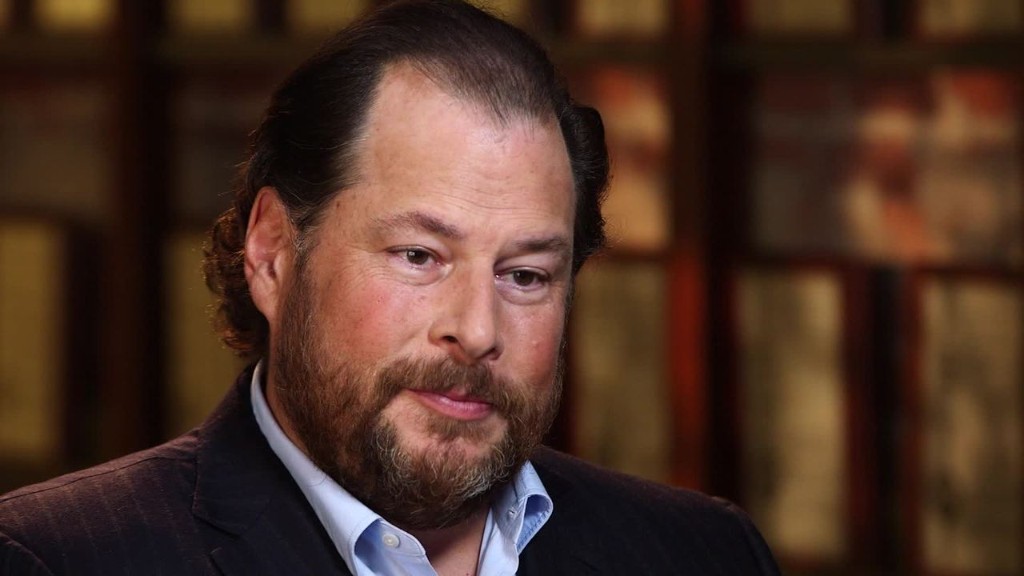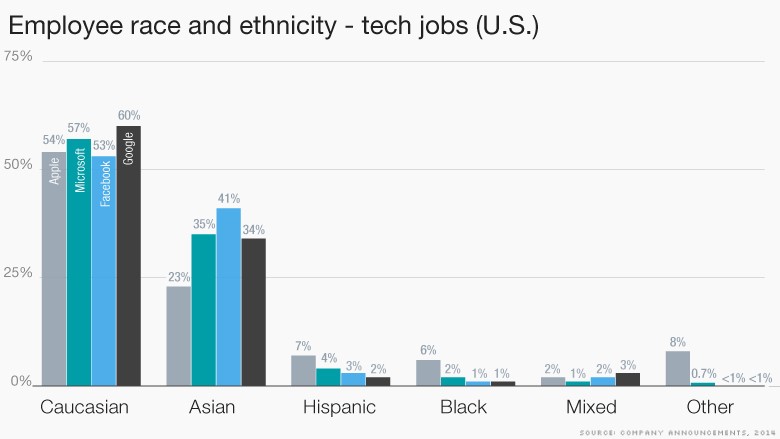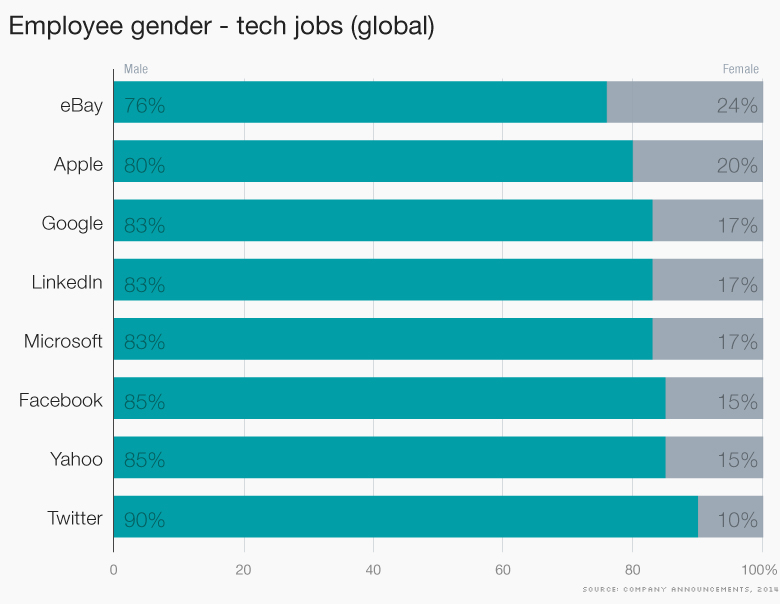
The lack of gender and racial diversity within the tech industry is a problem that almost every Silicon Valley company is trying to solve.
Getting there will take time and money. But in the end, tech companies hope a more diverse workforce will result in bigger sales and profits.
After all, engineers build gadgets and software for men, women and people of every color -- and a diverse workforce means a more expansive understanding of what customers want.
The tech industry had been secretive about the makeup of its workforce largely until 2014, when companies began releasing their diversity statistics in full force. Unsurprisingly, employees are mostly white men, but each firm pledged to add more women and minorities to their ranks.

A year later, here's what some of the biggest tech companies are doing to become more diverse.
Apple (AAPL): Apple has said it will donate $50 million to organizations that will help women and minorities get into tech jobs. The investment will take the form of scholarships, college training programs, and paid internships. The company is partnering with historically black colleges and universities (HBCUs), as well as the National Center for Women and Information Technology.
Before this year's WWDC, Tim Cook also told Mashable he is convinced the industry can become more diverse. "Most of the issues have been created by humans, so they can be fixed," Cook said.
Google (GOOGL): Google told CNNMoney it plans to spend $150 million on a combination of internal and external diversity efforts. Half will go toward outside organizations and communities focused on attracting and keeping women and minorities in technology. The other half will be used inside the company to make Google more inclusive. In 2014, the company invested $114 million in diversity programs.
Microsoft (MSFT): In an email sent to Microsoft employees and published on the company's website last year, CEO Satya Nadella said he believes "men and women should get equal pay for equal work."
Publicly, Microsoft has tried to change the white male image of tech. The firm featured three female executives -- Agnieszka Girling, Briana Roberts and Lara Rubbelke -- during its Build keynote in April.
Intel (INTC): The Intel Capital Diversity Fund will invest $125 million in minority-led startups over the next five years. The new fund will be headed by Lisa Lambert -- a former software engineer who says a lack of diversity in tech is a funding problem, not a shortage of ideas or startups.
"It's not a social cause, this isn't charity," said Lambert. "This is real business and we believe in it."
In January, Intel CEO Brian Krzanich pledged $300 million to hire and retain a proportion of women and minorities to be "more representative of the talent in America," including in leadership roles, by 2020. A portion of the money will also be invested in groups and programs outside the firm.
eBay (EBAY): The online auction company recently added two more women to its board of 17 directors: Bonnie Hammer, chair of NBC Universal Cable Entertainment, and Gail McGovern, American Red Cross CEO. Before Hammer and McGovern joined, eBay had just one woman on its board -- Kathleen Mitic, a startup veteran.
Salesforce (CRM): CEO Marc Benioff told CNN's Poppy Harlow he has an aggressive goal to employ an equal number of women and men, and he thinks it's "absolutely doable" within five years. Salesforce is also currently reviewing all employee salaries, because Benioff said he wants to make sure women and men are paid the same for the same role.
Read: These 9 startups are focused on increasing the number of women and minorities in tech
By setting bold goals, the public can help hold Silicon Valley executives to be accountable for what they say.
But reaching these objectives won't be easy. There is a well-known pipeline problem, in which women and minorities tend not to seek careers in science and technology.
Making matters more difficult, the lack of diversity is most pronounced among the people making the decisions. Managers and executives have the power to promote and control which projects are prioritized, funded, and executed. And they serve as role models inside and outside the company.
Twitter's global workforce, for example, is 70% male, 30% female, but its tech jobs are staffed by 90% male workers and 10% female workers. Twitter overall is 12% non-white or Asian, but among tech workers, this proportion drops to 8%. Similarly just 4% of Twitter's senior management team are non-white or non-Asian, and 79% are male.

The way to fix the problem is to make existing employees feel more comfortable raising issues without consequence, according to Kathy Phillips, a professor and senior vice dean at Columbia Business School. Once they do, companies should give them the right and ability to suggest remedies and implement them.
Many of these firms have started to publicize their 2015 figures -- but don't expect much change from last year. There's still a long way to go.

